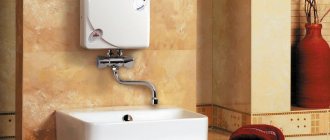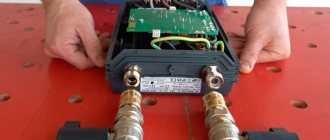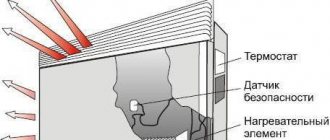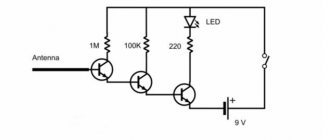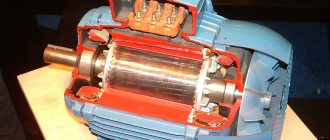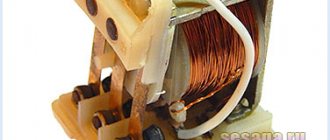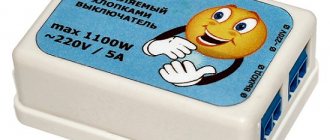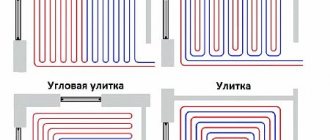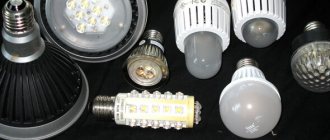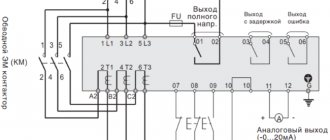The peculiarity of this development is that it is designed to supply only resistive loads with electricity, since in it the alternating voltage is converted into direct voltage by a diode bridge. I dealt with the Babay iz Barnaula water heater. If the load-bearing capacity of the wall is in doubt, then it is better to pre-construct a stand or install additional brackets to support the device. This is what the temperature control knob is designed for. Electrical diagram of the Termal boiler
Induction water heater diagram A new product that has recently appeared on the water heating equipment market has an even simpler connection diagram. Their material and thickness must be taken into account correctly, otherwise a fire may occur. Electrical diagram of the boiler. If you want to connect the boiler to the old common wiring, which already has several sockets connected, be sure to make sure that it can withstand the power of the boiler.
Classic scheme of indirect heating equipment. This maintains a constant temperature of the water in the container.
Its function is performed by two other components: A water flow sensor, which turns on heating only when it flows; Thermal sensor that prevents heating elements from overheating.
Electrical diagram of a boiler How to connect a boiler to electricity
The difference between instantaneous water heaters and storage water heaters
The difference is immediately obvious from the name - water flows or accumulates. The pros and cons (or differences) of these two types of water heaters are listed below.
Characteristics of electric water heaters
- Dimensions and weight of the heater. The flow-through type has much smaller dimensions; it can be hidden under the sink or, for example, in a cabinet nearby; its weight is about 1 kg. The storage tank is a large tank with a capacity of about 200 liters, and accordingly its weight in the “charged” state is more than 200 kg. Storage water heaters with a capacity of more than 200 liters are usually installed in a floor-standing version.
- Power consumption. This parameter is very important from an electrical point of view; much attention will be paid to it later in the article. For a flow-through heater it is very large, and can be comparable to the power consumed by the entire apartment - 7 kW and above. The storage heater consumes less electricity - 1.5...3 kW
- Water heating speed. The main advantage of an instantaneous water heater is the speed of operation. He opened the faucet - and after a couple of seconds, “it was warm.” The storage one heats the entire volume at once, and it may take up to an hour to heat the water to normal temperature.
- Price. Here the difference is noticeable, for flow-through the price is 1500-2000 rubles, the price of accumulative ones is 2-3 times higher. A “normal” storage water heater starts at a price of 6000, but again, everything greatly depends on the desired parameters.
- I would also divide flow-through ones into 2 groups based on design . There are those that simply have an outlet for a half-inch pipe (hose), and then you can connect it wherever you want. And there are those whose design includes a tap or hose with a shower.
How to attach
Installation of a water heater should begin with a thoughtful and scrupulous study of the instructions. After which it must be installed correctly on the wall.
Models of water heaters differ in the number of anchor hooks, those with a smaller capacity have three, and those with a powerful capacity have five.
The water heater must be installed vertically and with minimal distortions. During installation, it is recommended to use a building level. Heavy water heaters must be mounted on solid walls with full confidence that they will withstand this weight. A panel house is good.
If the house is brick, then you need to make sure that the masonry is secure and, if in doubt, strengthen it. Separate the seams and then apply the solution again. There is an option in which the walls are pierced through and secured on the other side with metal plates.
If there are still some doubts about the reliability of the load-bearing wall, then it would be better to first make a metal frame in the form of a frame, and weld anchor hooks to it. This structure should be attached to the wall, and the water heater should be hung on it.
Please note: installation must be done in such a way that there is easy access to the emergency switch.
The Termex line of water heaters includes compact models that allow installation in a small space, typical of old-type apartments. There are also models that allow you to install the unit under the kitchen sink. But it will still be better if the kitchen faucet is connected using a separate tube.
[my_custom_ad_shortcode1]
Which water heater to choose - storage or instantaneous?
If you decide to approach the issue of heating water thoroughly, then it is better to go to the expense and choose storage water heater (links at the beginning of the article).
We planned to go swimming and wash the dishes in an hour - we turned it on, washed and shaved, and turned it off. And the water will cool for a long time (several hours), it can be used without consuming electricity.
If you need hot water here and now, or are limited in funds, or have nowhere to put this huge tank, then, of course, it is better to choose a compact, instantaneous water heater. But here you need to take a special approach to the power supply, which will be discussed below.
Operating principle of the boiler
By opening the tap, the user receives water from the water supply line. The liquid is regularly mixed into the tank with a cold mass. If a cold stream flows from the tap, the supply of hot water has run out, you need to wait for a new portion to heat up.
The principle of operation of the water heater is that the heating elements are turned on when the temperature sensor detects a decrease in indicators below the norm, regardless of whether water is being drawn at that moment or not. The container cannot be completely emptied so that there is no water in it. When using, for example, a shower, a cold stream is added to the tank, replacing the selected volume.
In order for water to flow from the tap, it is necessary to ensure a certain pressure in the supply water supply, while the internal tank with an electric heater will always be filled with liquid. If there is no pressure, water does not come out of the tap so that the tank does not remain empty.
The cold flow is supplied from below; there is a divider at the end of the fitting so that the water spreads in the area where the heating element is installed. The heated water rises due to convection and no longer mixes with the newly arriving cold water.
Diagram and design of an instantaneous water heater
The electrical circuit diagram of the Termex System instantaneous water heater is shown below. The diagram is taken from the instructions, which can be downloaded at the end of the article.
Scheme of instantaneous water heater Termex System
So, what’s “under the hood” of this water heater and how does its electrical circuit work?
- M is a flow sensor that closes its contacts as soon as there is sufficient water flow. That is, if the water flows weakly or there is none at all, it will not turn on and the circuit will not work.
- P - power control relay, switched on by the flow sensor M. This relay turns on the power to the heating elements with its contacts.
- T1 – temperature sensor, T2 – temperature sensor with mechanical activation, used to prevent overheating of the heating elements. If these sensors are triggered, the heating elements will no longer turn on. If sensor T2 is triggered, it can be turned on manually after cooling.
- TEN1, TEN2 – electric heating elements, in this device they turn on simultaneously.
- N - neon indicator on the front panel.
- L – Phase, Line
- N – Zero, Neutral
- E - Earth
Let's look at the photo of a real flow-through water heater:
Instantaneous water heater Termex System - device and principle of operation
As you can see, there is only one overheating sensor (T1, it has one contact through which both heating elements are powered). The manufacturer warns in the instructions that it can change the layout and design at its discretion.
The photo does not show how the two heating elements are powered separately.
Instantaneous water heater Termex System - a closer look at the device
Here the arrow shows the button (Reset), which must be pressed if the overheating sensor is triggered.
And here is a photo showing the relay parameters:
Relay turning on heating elements
Measurement of active power in three-phase current circuits
When measuring the power of three-phase current, various circuits for connecting wattmeters are used depending on:
wiring systems (three- or four-wire);
load (uniform or uneven);
load connection diagrams (star or delta).
a) power measurement under symmetrical load; three- or four-wire wiring system:
Figure 9 Figure 10
In this case, the power of the entire circuit can be measured with one wattmeter (Figures 9,10), which will show the power of one phase P=3P f =3U f I f cosφ
b) with an asymmetric load, the power of a three-phase consumer can be measured with three wattmeters:
Figure 11
The total power of the consumer is equal to:
c) power measurement using the two-wattmeter method:
Figure 12
It is used in 3-wire three-phase current systems with symmetrical and asymmetrical loads and any method of connecting consumers. In this case, the current windings of the wattmeters are connected to phases A and B (for example), and the parallel windings to linear voltages U AC and U BC (or A and C U AB and U CA), (Fig. 12).
Total power P=P 1 +P 2.
Electric water heating and heating equipment has received great demand among consumers. It allows you to quickly organize heating and hot water supply with minimal initial costs. Some people even create such equipment on their own, with their own hands. And the heart of any homemade device becomes a heating element with a thermostat.
How to choose the right heating element and what to focus on when choosing it? There are quite a lot of parameters:
- Power consumption;
- Sizes and shape;
- Availability of built-in thermostat;
- Availability of corrosion protection.
After reading this review, you will learn how to independently understand heating elements with thermostats and be able to connect them.
Design and diagram of the Thermex Stream water heater
Thermex Stream is simpler, here is a photo of its insides:
Termex Stream internal structure
In Stream, the circuit is simplified - there are no relays. The water flow sensor (flow sensor, pressure sensor), as usual, protects against dry running, and the thermal relay protects against overheating.
Here is a diagram of the water heater from the instructions:
Scheme of instantaneous water heater Termex 500 700 Stream
Types of thermostats
The boiler itself is quite simple. You can even install and connect the device yourself. But when choosing a unit, you need to pay attention to what kind of thermal relay is installed in it. For example, if it has temperature control or lacks it. There are several types of thermostats , on the basis of which water heaters are divided into several types:
- Programmable or simple. This affects temperature management.
- Electromechanical or electronic. The control of the device depends on this.
- Mortise or overhead. The installation of the unit depends on this.
The most common types are rod, electronic and capillary thermal switches. Rod models are obsolete and consist of a tube 35 cm long and 1 mm wide. Their operating principle is as follows. When exposed to high temperatures, the tube expands in size, causing pressure on the switch . The disadvantage of this model is its inaccuracy. Because the tube cools too quickly, the boiler runs longer than necessary.
The operating principle of the capillary thermostat is more modernized. A capillary thermostat is a tube containing cylinders filled with a liquid that differs in density from water.
As the temperature rises, the liquid filling the cylinders of the capillary thermostat increases in volume and begins to put pressure on the membrane and switch . The error in the discrepancy is 3 degrees.
Electronic thermostats are the most common models and the most accurate. The advantage of this model is its direct interaction with the protection relay . Thanks to its presence, an emergency automatic power shutdown is carried out in the event of a lack of liquid in the tank.
Instructions for instantaneous water heaters
Below are instructions for the heaters discussed in the article.
You should read them carefully before using them. Especially the sections where it is written how to turn water and power on and off. • THERMEX_System_manual / Instantaneous electric water heater THERMEX System.
Manual. Purpose, technical characteristics, delivery set, description and principle of operation, operation, electrical diagram., pdf, 4.66 MB, downloaded: 5111 times./ • THERMEX_Stream_manual / Instantaneous electric water heater THERMEX Stream. Manual. Purpose, technical characteristics, delivery set, description and principle of operation, operation, electrical diagram., pdf, 6.58 MB, downloaded: 4549 times./
• THERMEX_Combi_manual / Instantaneous electric water heater THERMEX Combi. Manual. Purpose, technical characteristics, delivery set, description and principle of operation, operation, electrical diagram., pdf, 6.89 MB, downloaded: 3308 times./
That's all, please ask questions about the design and circuit of instantaneous water heaters in the comments!
Installation Tips
To avoid installation errors, use the following tips:
- If you are installing another thermostat (not in the form of a metal rod), then its installation will be carried out using a similar method - the thermostat is built into the electrical circuit break on the phase wire that goes to the heating element. More detailed installation instructions can be found on the packaging.
- Before purchasing, be sure to check the operating voltage of the thermostat. There are devices on sale that work not only with 220 V, but with other voltage levels (24, 127, 380 and others). You can also check the technical parameters with the seller or look at the packaging.
- Do not rush to buy a device with maximum sensitivity. For most everyday tasks, a sensitivity of 0.5-2 degrees will be sufficient. Of course, no one will forbid you to buy more accurate devices, but they usually cost several times more, and they will be of little practical use.
